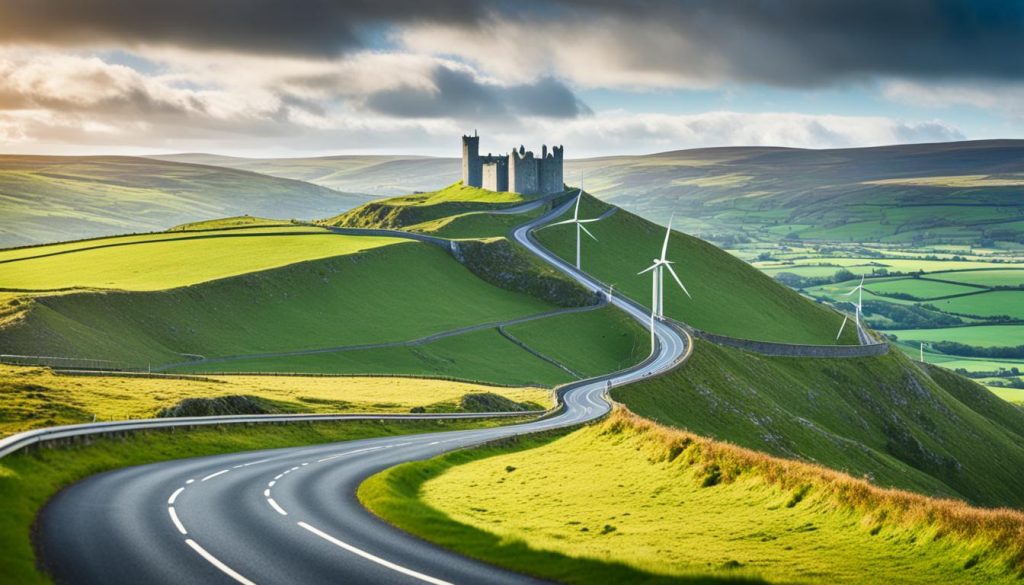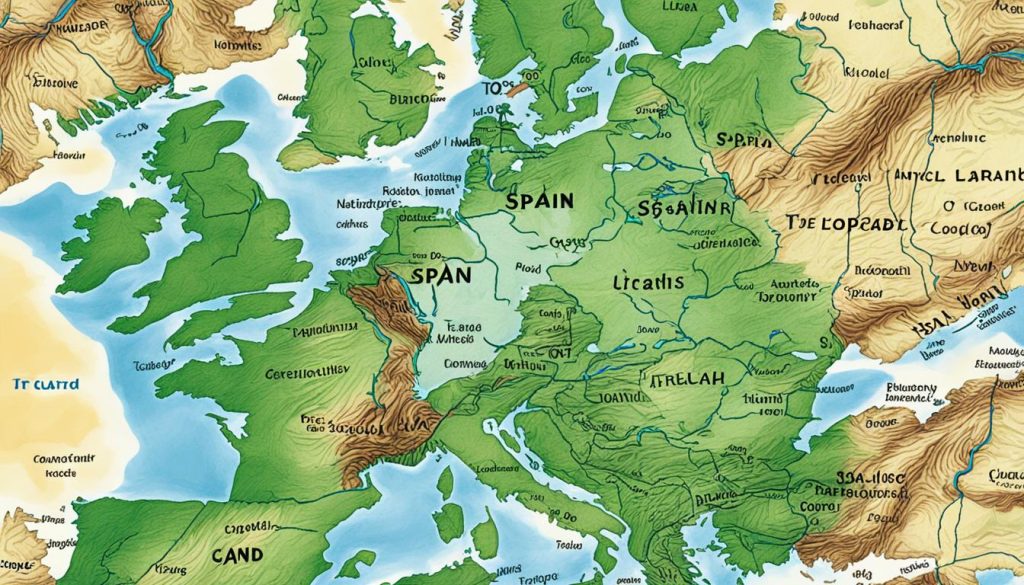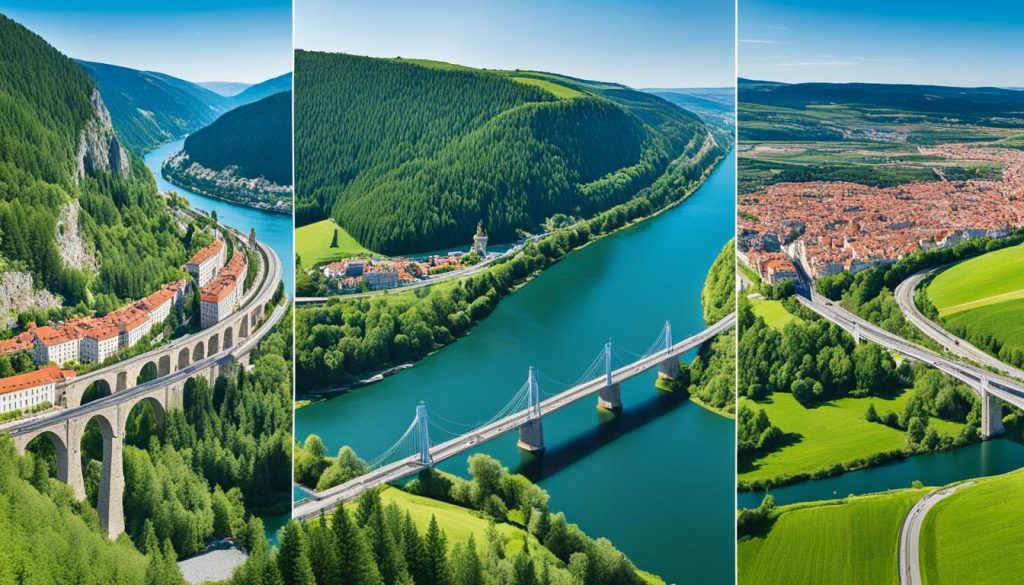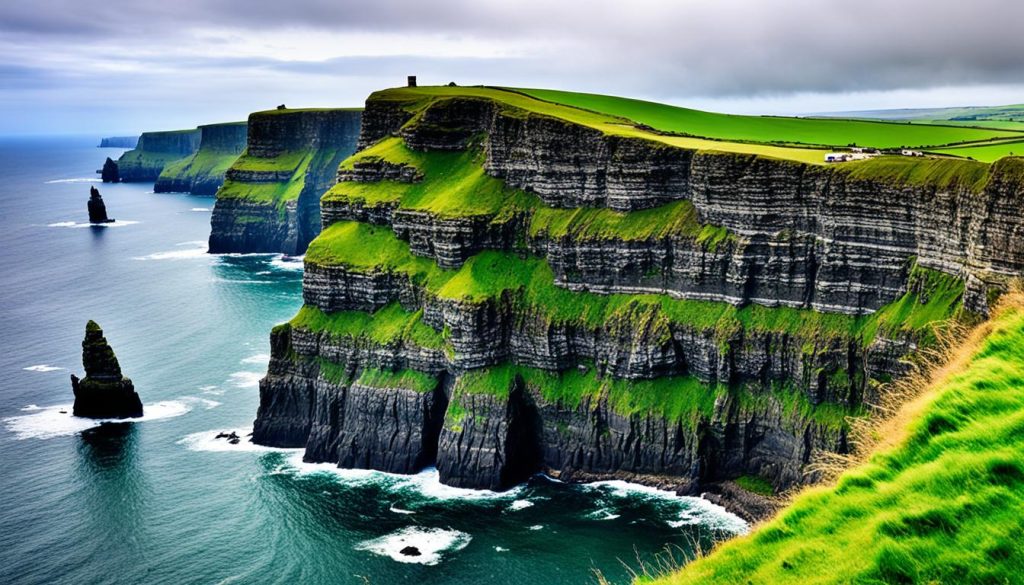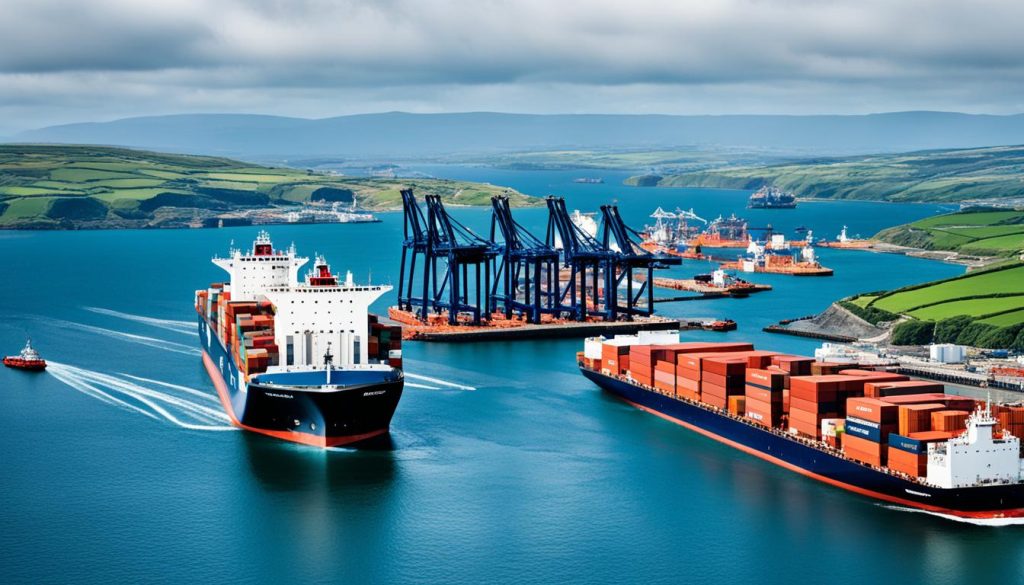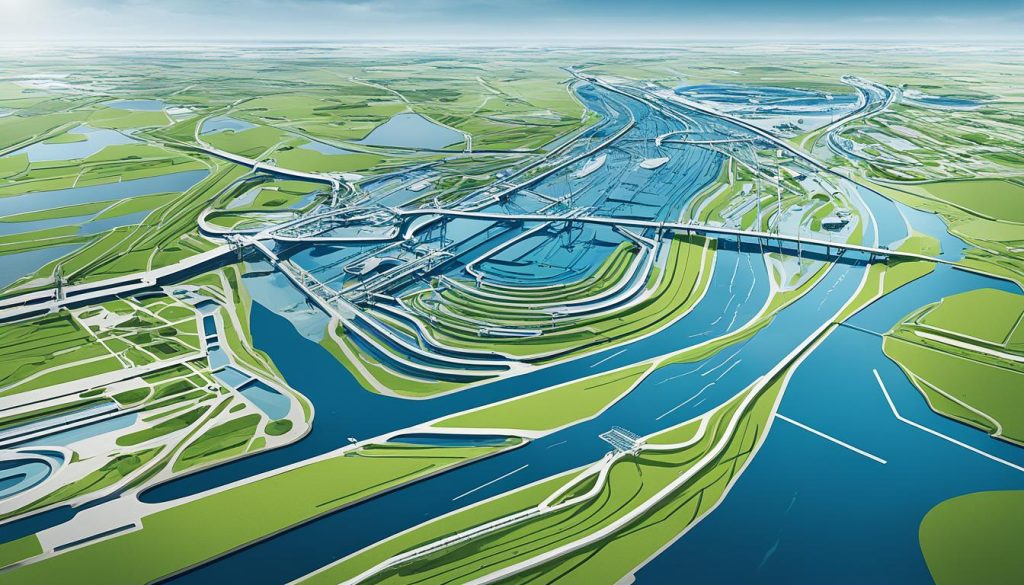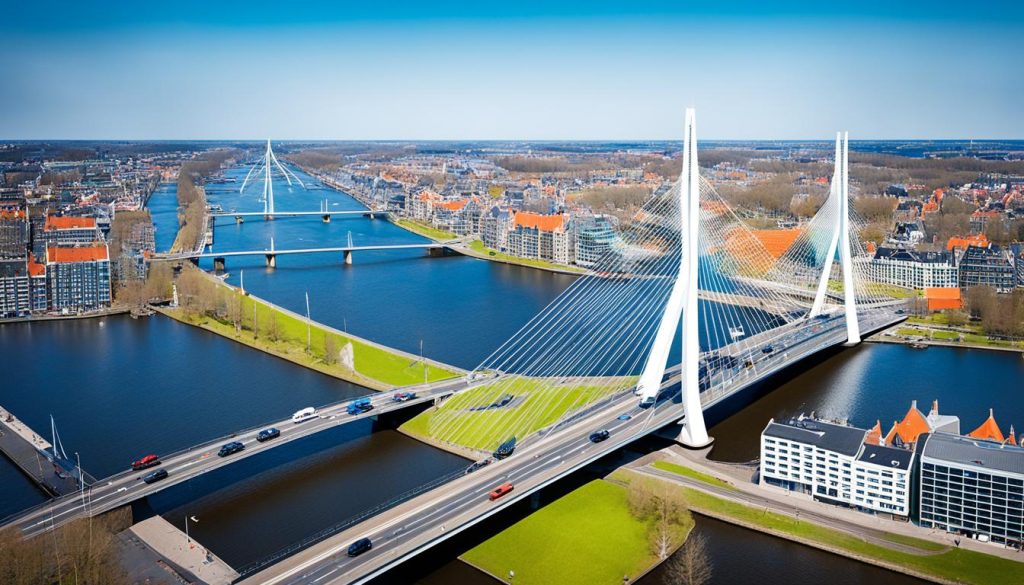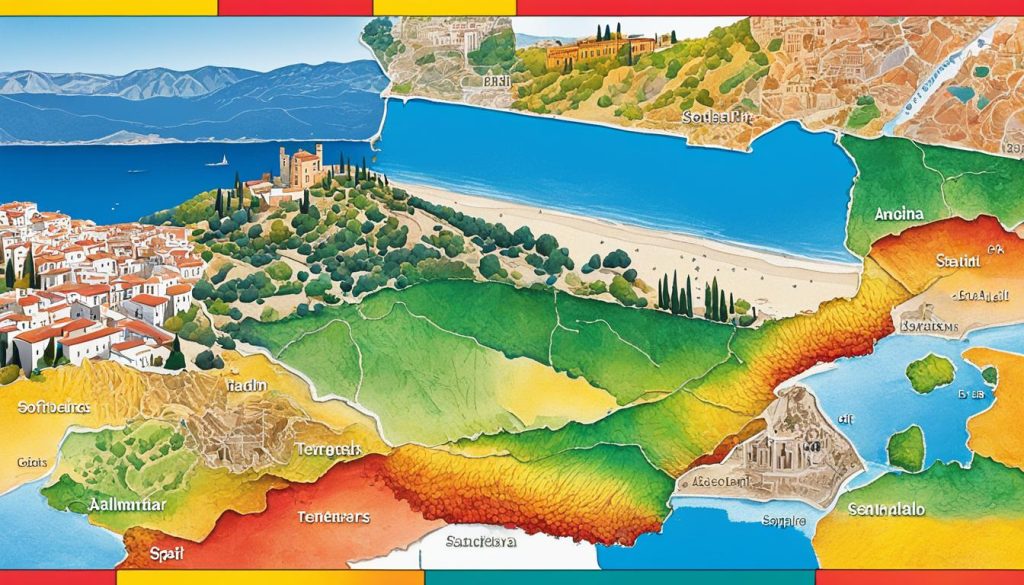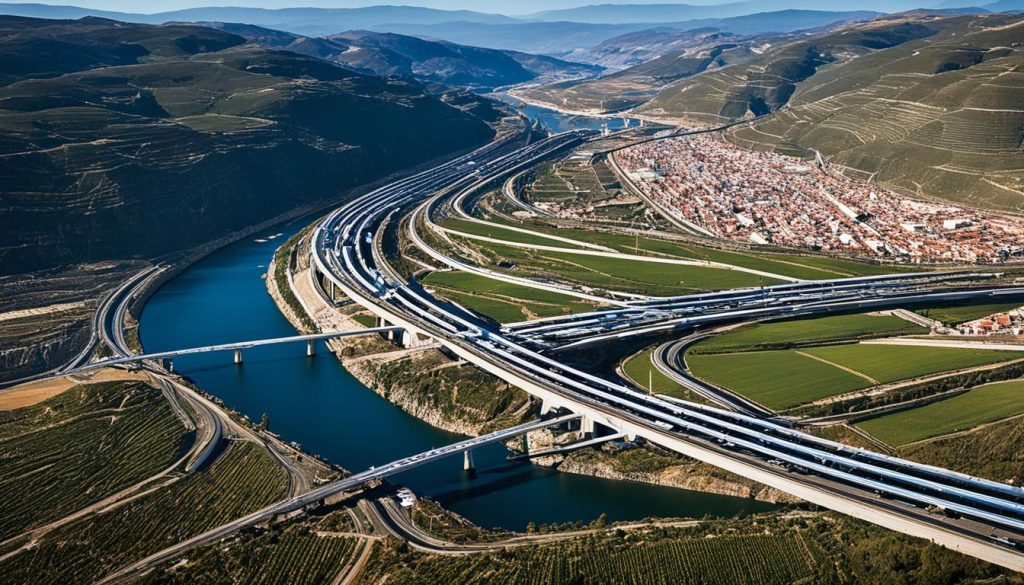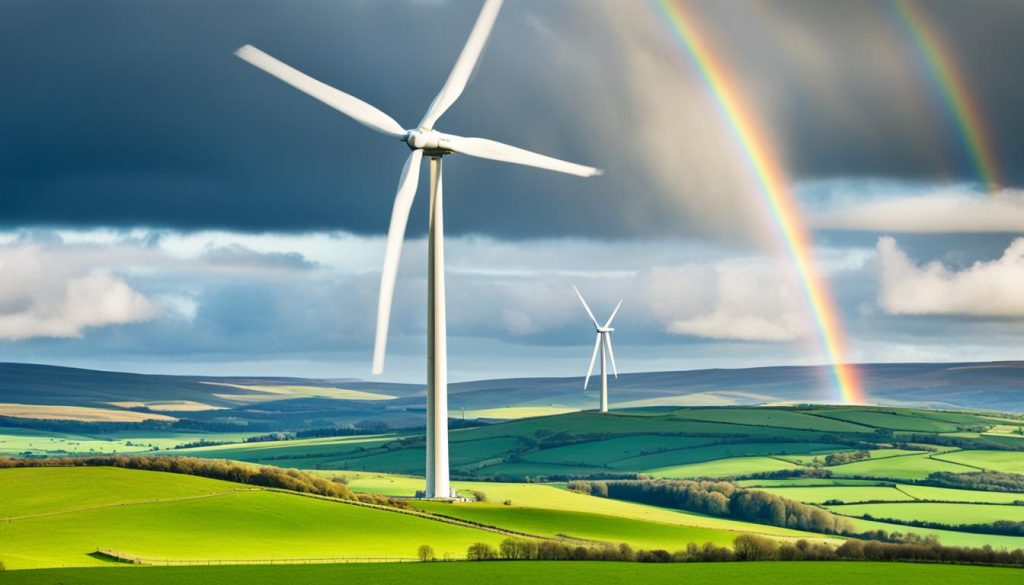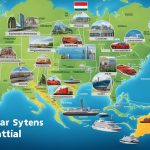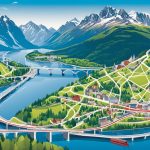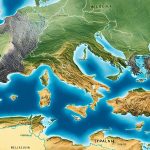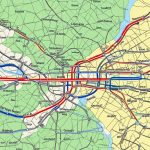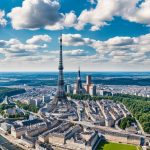The landscapes of Europe are both varied and fascinating. Each place has its own geographic features, leading to different infrastructure challenges and innovations. Ireland, the Netherlands, and Spain show clear differences and similarities with their stunning terrains and waterlogged areas. Ireland’s strong infrastructure connects its green lands, while the Netherlands has mastered living with the sea. Spain’s diverse scenery has led to unique urban designs and ways to handle the climate.
Transport is key for a country’s economy, and each of these countries has found unique ways to use their landscapes to their advantage. Ireland uses its windy fields for renewable energy, showing a commitment to the future. Urban designs in these countries respect local cultures but also prepare for climate change. This careful planning showcases their innovative spirit.
Introduction to Comparative Geography and Infrastructure
Our journey starts in Ireland’s green hills and busy cities, moves through the Netherlands’ water-filled landscapes, and finishes in sunny Spain. These places show us how geography influences the way countries are built. The history and beauty of Europe have not just shaped the land. They have also shaped the culture, telling stories of old battles, trade, and changing societies.
Europe’s varied landscapes tell the story of human progress. The mix of geography and economic growth in these areas shows Europe’s dedication to linking land with development. Ireland’s green fields boost its farming strength. The Dutch mastery in managing water shows how they turn geographic challenges into strengths. Spain, with its different weather areas, showcases a mix of regional identities, from busy Mediterranean shores to peaceful mountains.
- Cultural Enrichment through Geography: A look at how European landscapes have nourished the cultural identity unique to each region, shaping customs, traditions, and social frameworks.
- Infrastructural Evolution: Delving into how historical and contemporary infrastructural development across Ireland, the Netherlands, and Spain is informed by their respective geographies and how these developments contribute to their nation’s global standing and economic integration.
- Economic Integration and Influence: Exploring the dynamic interplay between economic strategies and the infrastructural matrix within these countries, elucidating on how adaptability to geographic realities underpins robust economic growth.
The future of building things must focus on sustainability and looking ahead. The European Union is bringing Ireland, the Netherlands, and Spain closer economically. This shared vision suggests a story of interdependence where each country adds to a joint goal of growth.
- Geographic Influences on Policy-making: Scrutiny of how geographic realities inform the policy arena, especially regarding sustainability and infrastructure.
- Case Studies: Comparative analysis of projects that exemplify a unity between geography, infrastructural expansion, and cultural preservation.
As we explore more, it becomes clear that understanding how geography and infrastructure mix is key. It helps us appreciate not only the landscapes but the thoughts behind Europe’s integration and its physical outcomes.
Compare geography and infrastructure between Ireland, Netherlands and Spain
The landscapes and building styles of Ireland, the Netherlands, and Spain show how nature shapes a country’s growth. They blend their economic plans with EU goals, showing different ways to expand and manage their areas.
Assessing Geographical Influences on Development
Green fields and long coastlines help Ireland grow, with tourism and fishing playing big roles. The Netherlands deals with the challenge of living below sea level. This has led to innovative solutions to keep their land safe and usable. Spain’s varied land forms, including high lands and islands, direct its growth in farming and holiday spots.
Exploring Varied Infrastructure Strengths and Weaknesses
Ireland is upgrading its transport network, aiming for better connection and economic benefits. The Dutch set the standard in water management, using modern tech to fight flooding. Spain focuses on renewable energy and modern transport, looking to link regions and enhance its energy mix.
- Irish transport systems are evolving to better support economic growth and regional connectivity.
- Dutch water control remains a global benchmark in water management, safeguarding the country against the natural elements.
- Spanish regional development continues to benefit from investments in transport and a forward-thinking energy policy.
These efforts highlight the toughness and commitment of these European countries. They are keen on using their natural advantages while tackling infrastructure issues.
Geographical Layout and Natural Landscapes of Ireland
Ireland’s geography is unique, shaping its culture and economy. Its terrain is known for lush landscapes and a vast coastline. These features play a key role in the nation’s development.
The Island’s Terrain and Coastal Borders
The Irish landscape shows the marks of its glacial history. It has rolling hills, green valleys, and steep cliffs. The coastline, with its cliffs and beaches, supports various local economies.
This coastal area boosts fishing, tourism, and trade. It also provides vital maritime transport routes, connecting Ireland globally.
Key Natural Resources and Their Impact on Irish Economy
Ireland’s fertile soil boosts its agriculture, crucial for the economy. It supports a range of crops and livestock, adding to Ireland’s GDP. The country is also exploring renewable energy, particularly wind power.
Ireland’s approach to its natural assets includes their use and protection. This ensures its natural beauty and resources remain for the future.
Major Infrastructural Components of Ireland
The growth of a country largely depends on its Irish infrastructure. In Ireland, there is a push to build a strong base of services. These facilities are crucial for the country’s progress. At the heart of this is a growing network of transport. It connects people and goods across Ireland’s beautiful landscapes.
Also, Ireland is boosting its communication networks. It is doing this with modern technologies. You can see this in the advanced telecom towers and data centres. These are essential for today’s needs. They also help Ireland connect with the world as an information hub.
The progress in technological development in Ireland is impressive. The country is focusing on tech infrastructure. This includes biotechnology, information technology, and pharmaceuticals. Ireland believes in research and innovation. It sees them as key to future success.
- Expansive motorway networks to facilitate rapid land travel
- Enhanced public transport systems including buses, trams, and railways
- State-of-the-art broadband and mobile network coverage spanning rural and urban areas alike
- Investments in renewable energy projects to power the infrastructural grid sustainably
In transport, Ireland is upgrading its transport systems. The goal is to make these systems greener and more efficient. This will help the environment and improve access for everyone.
Ireland is blending tradition with innovation. It is keeping its green spaces while building infrastructure for the digital world.
Understanding the Netherlands’ Position Below Sea Level
The Netherlands has a special geography that brings both problems and clever solutions. Much of the land is under sea level. This means the Dutch must use the land carefully to keep their country safe and going strong.
Implications of Dutch Geography on Land Use
The Dutch landscape deeply influences how the land is used. Facing the challenge of being below sea level, the Dutch combine old wisdom with new tech. This helps them control and use their land well. Dutch water projects show how the country smartly faces its geographical challenges.
- Land Reclamation: A testament to the Dutch prowess in extending their usable land through dykes, polders and sophisticated drainage systems.
- Spatial Planning: Adapting urban and agricultural areas to not only cope with the unique environmental conditions but also to use them to the nation’s advantage.
- Eco-Innovation: Balancing demands of growth with the complexities of environmental conservation in a below sea level setting.
The Sophistication of Water Management Systems in the Netherlands
The Dutch excel in managing water with an advanced flood control network. This system is key to protecting them from floods. It is crucial for their everyday life and economy.
- Engineering Marvels: From flood barriers like the Maeslantkering to water pumps and canals, the infrastructure employed is both a technical and an aesthetic feat.
- Flood Control Expertise: The continuous investment in research and development to maintain and improve levees, dykes, and storm surge barriers.
- Public Safety and Awareness: A key component of Dutch water management is the emphasis on public understanding and engagement with water safety protocols.
Combining age-old practices with innovative designs is key to Dutch resilience against sea challenges. This approach highlights the country’s rich history and its ability to stay ahead of the water.
Infrastructure Innovations and Efficiency in the Netherlands
The Netherlands leads in infrastructure innovations, focusing on efficiency and sustainable development. Its infrastructure projects are a testament to Dutch ingenuity, showcasing a commitment to both economic and environmental resilience. With careful planning and inventive designs, the Dutch model offers a sustainable and efficient framework for the world.
The Netherlands’ infrastructure success lies in its dedication to innovation. Central to this are the extensive cycling networks that traverse both cities and countryside. These paths are more than just routes for bikes; they represent a commitment to an eco-friendly lifestyle and sustainable commuting practices.
The Dutch public transport system is another example of their commitment to efficiency. Offering seamless connections across various modes of transport, it embodies the nation’s pursuit of operational excellence. This interconnected network is key in easing city traffic and reducing environmental impact, while ensuring public services are easily reached.
- Focus on Cycling Infrastructure
- Comprehensive bike lanes promoting safe and sustainable travel
- Innovative bike parking solutions in densely populated areas
- Integration with public transport for extended mobility
- High-frequency schedules and punctuality benchmarks
- Use of smart technologies for travel updates and payments
- Energy-efficient and low-emission vehicles
- Green rooftops and energy-neutral buildings
- Sustainable urban drainage systems reducing flood risks
- Reclaimed land spaces designed for recreational and ecological purposes
The Netherlands’ approach to sustainable development is visible in its infrastructure. By embracing renewable energy and saving technologies, it sets a precedent for a sustainable world. In the face of climate change, the Netherlands offers a model for balancing human development with nature.
Spanning Spain’s Diverse Geography: From Plateaus to Archipelagos
Exploring Spain’s geography reveals a range of landscapes. These are nestled within the Iberian Peninsula’s wide arms. From dry central plateaus to lush archipelagos, Spain’s geography is varied. It features different terrains and climates. This diversity is key in shaping the country’s regional identities. It shows how the land influences people’s lives.
Spain’s Climatic Zones and Regional Geographic Diversity
Spain’s geography creates varied climates. In the north, the weather is influenced by the ocean, making the mountains green. The south enjoys a Mediterranean lifestyle. The central part has a continental climate. Here, the Meseta plateau experiences hot summers and cold winters.
- Cantabrian Range and Pyrenees: Lush and mountainous terrains experience heavier rainfall and cooler temperatures.
- Andalusia: Embraces a warmer Mediterranean climate ideal for olives and sherry vineyards.
- Castilla-La Mancha: Known for its continental climate, influencing the iconic windmills and castles of the region.
- The Balearic and Canary Islands: Possess subtropical climates, cultivating diverse ecosystems and thriving tourism.
The Influence of Geography on Spanish Culture and Lifestyle
Geography deeply influences Spanish culture. It shapes regional folklore, cuisine, and festivals. The echo of the land is heard in flamenco dance, the matador’s challenge, and the sound of Spanish guitars. The Iberian Peninsula’s history interplays with its environment. This enriches Spanish culture with a legacy lasting thousands of years.
- Mediterranean Coast: Transforms from quaint fishing villages to bustling seaside resorts, shaping lifestyles wedded to the sea.
- Interior Plateaus: Foster hearty cuisines and resilient characters hewn from the sparse landscapes.
- Northerly Regions: Infuse a Celtic influence into music and dance, reflecting a cooler, Celtic history.
- Archipelagos: Cultivate their own unique identity, separated by waters, yet united under the Spanish sovereignty.
Spain’s regional identities are rich expressions of cultural diversity. They stem from the land’s geographical influence. The dance, cuisine, and arts are inspired by Spain’s varied geography. This diversity enriches every part of Spanish culture. Understanding these geographical and cultural treasures shows the close bond between the land and its people. They are united in a lasting Mediterranean embrace.
Dissecting Spain’s Infrastructure: Transportation and Energy
Spain works hard on its infrastructure, focusing a lot on transport and energy. It connects its transport systems with the rest of Europe. This helps with trade and movement. They’ve combined roads, trains, ports, and airports with technology. This sets the scene for modern transportation.
Spain is also making big moves in energy, choosing renewable sources to grow sustainably. They invest in projects while also changing policies. These policies promote greener energy, electric transport, and using energy wisely.
- An extensive network of high-speed trains shows Spain’s big spend on cutting travel time and growing the economy.
- They’re also improving ports to handle more and work better. This makes Spain a key maritime link to Europe.
- Wind and solar power projects change how Spain gets energy. This switch is backed by policies for a greener future.
- Cities in Spain are becoming smarter. They focus on public transport to reduce traffic jams and pollution.
Spain is clearly putting a lot of effort and money into its infrastructure. This move is towards being integrated, green, and strong economically. By thinking about location and the environment, Spain is planning for a future. A future where growth and nature are both important.
Ireland’s Stance on Renewable Energy
Ireland is moving towards green energy, and wind power is at the forefront. This shift to sustainable energy is a top priority in Ireland. It also inspires environmentally friendly efforts around the world. By using strong winds, Ireland is changing to a greener, more dependable energy system.
The Growth of Wind Energy in Ireland’s Energy Mix
Wind energy is now a key part of Ireland’s energy. The country’s location makes it great for using wind power. Efforts to increase wind energy, including more wind farms, are clear. This move to wind energy helps cut down CO2 emissions. It also brings more security to energy supplies and makes new jobs in green projects.
Fostering a Sustainable Future Through Irish Infrastructure Projects
- Enhancing the Smart Grid: Key for Ireland is to upgrade the smart grid. This helps manage electricity from wind better.
- Green Transport: Ireland is working on more electric vehicle spots. It also supports public transport that uses green energy.
- Eco-Friendly Housing: A major aim is building new, efficient houses. Ireland also wants to improve existing homes to be greener.
Ireland is really pushing for sustainable growth and protecting nature. The focus on promoting green infrastructure across Ireland shows their commitment. It’s all about making things better for us now and for future generations.
Netherlands: A Global Leader in Cycling Infrastructure
The Netherlands is renowned for boosting sustainable transport, especially with its bike paths. The dedication to green travel is clear across the nation. These paths are much loved for supporting health, sustainability, and smart travel.
The bike paths cross cities and the countryside, showcasing top-notch planning and broad support for green transport. They help promote healthy living, cut down city congestion, and improve air by reducing car use.
The Dutch passion for cycling has made their infrastructure a global stand-out. Bike routes extend everywhere, making cycles a top choice for daily travel. This has majorly changed city designs, focusing on cyclist needs. This includes safe bike storage and prioritising bike lanes over cars.
- Comprehensive cycling network connecting various city spots and scenic routes
- Strategic placement of bike rental hubs encouraging locals and tourists alike
- Cycling traffic lights and dedicated lanes for safety and efficiency
This dedication shows the Netherlands’ commitment to a greener transport future. It shifts how we think about cities and nature. By choosing bikes first, the Netherlands sets a gold standard for sustainable, friendly city travel worldwide.
Urban Planning and Modern Architecture in Spanish Cities
Spain is a key example of how urban planning and modern design can work with preserving cultural landmarks. Cities like Barcelona and Madrid blend old and new beautifully. They show Spain’s dedication to keeping its architectural heritage while embracing modern Spanish architecture.
Barcelona’s Integration of Heritage and Modernism
In Barcelona, old and new elements are mixed perfectly. The city’s Barcelona urban planning protects its historic buildings but also makes room for modern designs. This mix creates an urban space where ancient sites and modern buildings stand together. It keeps Barcelona’s rich history alive while looking ahead to future designs.
Madrid as a Hub for Infrastructural Investments
Madrid is at the centre of Spain’s efforts in infrastructure. It’s seen as an investment hub, pulling in funds for Madrid infrastructure and urban projects. These projects improve not only the city’s look but also its economy. They also focus on sustainable urban development, aiming to make Madrid a leader in modern infrastructure worldwide.
Comparing Economic Opportunities Via Geographic Assets
We look at how Ireland, the Netherlands, and Spain use their geography to grow economically. Each country uses its natural strengths in different ways. Ireland’s growth is helped by its green land and coastal spots. These features are key for its transport and energy projects.
The Netherlands shows its skill in dealing with water, as much of the country is below sea level. This skill powers its economy.
Spain’s varied land supports its growth. Its regions are unique, affecting transport and energy plans. Spain works hard to use its geography well, helping its economy.
Looking at these countries shows us how nature helps shape economies. Ireland, the Netherlands, and Spain all grow by using their landscapes wisely. Their stories teach us about building a strong economy using geography.
